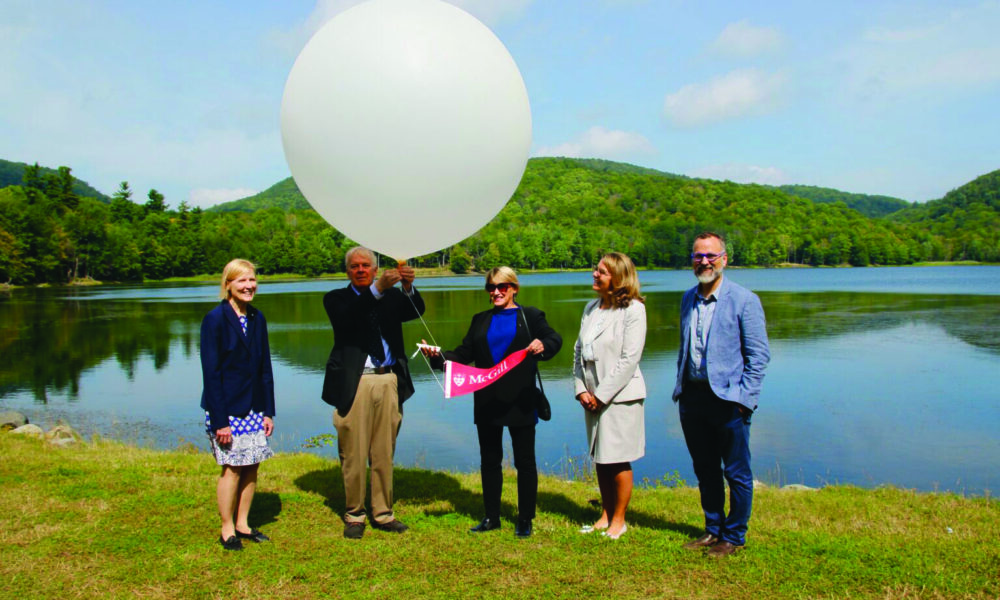A few days before former McGill Principal and Vice-Chancellor Suzanne Fortier stepped down, she attended the inauguration of the Adaptable Earth Observation System (AEOS) facility at McGill’s Gault Nature Reserve. The new building, buried between the modest peaks of Mont-St-Hilaire, serves as a home to a biology lab and an atmospheric sciences lab dedicated to studying the ecology and atmosphere of the Saint Lawrence River Valley (SLRV). After its recent opening, John Gyakum, professor and chair of Atmospheric and Oceanic Sciences at McGill, told The McGill Tribune in an interview that the AEOS would serve as a hub for future studies of the SLRV and as a monitor for regional climate change.
Thanks in part to funding from the Canada Foundation for Innovation, the Quebec government, McGill, and Université du Québec à Montréal (UQAM), researchers from across the province and abroad will be able to study meteorological phenomena unique to the region in addition to their ecological impacts.
Gyakum is one of the lead researchers running several projects out of the AEOS facility. He explained that, while the main building itself has a biology lab and an antenna on the roof for meteorological balloon launches, an adjacent tower serves as the primary tool for meteorological research.
“The meteorological tower […] has a lot of instrumentation—upward of about $250,000 to $350,000 worth of equipment—on one tower with measurements not only of wind and temperature and humidity, but also cloud amounts and radiative properties of the atmosphere and when it is precipitating,” Gyakum said.
The tower at the Gault Nature Reserve is part of a larger network that collects atmospheric data—such as those mentioned by Gyakum—from the SLRV. The SLRV is of particular interest to atmospheric and climate scientists because of a rare weather phenomenon that occurs in the region—freezing rain.
Freezing rain forms when frozen precipitation falls through a layer of warm air in the atmosphere, causing the precipitation to revert to a liquid. The liquid, however, is immediately transformed into ice when it hits frozen ground. This phenomenon is very dangerous as it creates a layer of ice that can cause trouble for those journeying through the affected area. Anyone who has driven during a Montreal winter can attest to the headache of navigating Quebec roads after a bout of freezing rain.
Gyakum explained that Montreal is susceptible to such weather events because it is located at the intersection of north-eastern and south-western winds, which creates the proper temperature layerings in the atmosphere to allow for freezing rain.
“There is an enormous horizontal temperature gradient,” Gyakum said. “That front represents a location […] for wintertime precipitation because the air […] coming in from the United States and ultimately from the tropics is forced to lift and condense out and produce a lot of precipitation.”
In the long run, the AEOS will also contribute to our understanding of the impacts of the climate crisis. Gyakum explained that by closely monitoring atmospheric changes in the SLRV over time, researchers will be able to create a comprehensive study of environmental changes in the region, hopefully informing future environmental policies.
“What we can do is observe some of the details of the extreme weather events which are really well-linked to climate change, for example, droughts, heat waves […] and also extremely heavy rains and thunderstorms,” Gyakum added. “Those details represent an important data point in identifying some of the extremes that are occurring in the context of global warming.”
Moving forward, Gyakum hopes to prove the adaptability of the AEOS by using the transportable equipment at his disposal to collect data not only from the Gault Nature Reserve, but from locations all across the SLRV.










